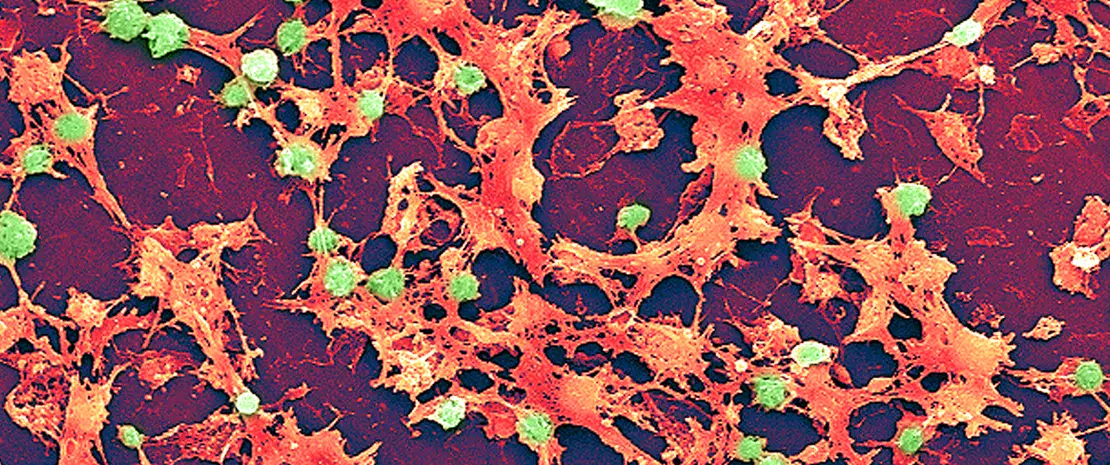Menstrual toxic shock syndrome: balanced flora protects against attacks by S. aureus
Menstrual toxic shock syndrome (TSS) is not just a question of pathogenic bacteria (S. aureus in this case), but also of commensal vaginal bacteria. At the top of the list are the highly protective Lactobacillus jensenii and L. crispatus.
Sources
This article is based on scientific information

About this article
High fever and rash, hypotension and even multiple organ failure: although rare, menstrual TSS can be life-threatening for the women affected, often young girls. At the heart of this infection is the bacterium Staphylococcus aureus, which produces the toxin TSST-1 (toxic shock syndrome toxin-1). The production of this toxin depends on the vaginal environment: favorable conditions include the presence of oxygen (increased by tampons and cups), a low concentration of glucose, and a neutral pH. Hence the protective role of the vaginal microbiota, characterized by a prominence of lactobacilli, which acidify the vaginal environment.
But the drop in estrogen and the lower concentration of vaginal glucose (linked to loss of mucous membrane) at the onset of menstruation reduce the abundance of these lactobacilli. Could these conditions make menstrual TSS more likely? To find out more, researchers 1 simulated different vaginal environments in vitro to measure their effects on TSST-1 production.
1 to 3 women in every 100,000 using intravaginal devices (tampons, cups) are at risk of menstrual TSS.
x2 to x3 The risk of TSS doubles when a tampon is kept in for more than six hours, and triples when it is worn overnight.
Mimicking vaginal flora in vitro
Before delving further into the experiments conducted, let's recall that in women, five major types of vaginal flora (community state types or CST) have been identified:
- Three are considered healthy, dominated by Lactobacillus crispatus (CST-I), L. gasseri (CST-II) and L. jensenii (CST-V), ;
- one is considered transitional, dominated by L. iners (CST-III) ;
- and one is deemed dysbiotic and associated with bacterial vaginosis, composed of a polymicrobial community including Gardnerella vaginalis (CST-IV).
The researchers therefore created vaginal environments representative of these five types and varied the glucose concentrations in them.
3 conditions
At least three concomitant conditions are necessary for the development of menstrual TSS:
- vaginal colonization by a strain of S. aureus producing the toxin TSST-1, which affects 1 to 5% of women;
- the use of intravaginal protection (tampon, cup) during menstruation, which includes 60% to 80% of women in developed countries;
- and the absence of neutralizing antibodies against TSST-1, which affects 10-20% of women.
Protective conditions and bacteria
At high sugar concentrations, toxin production by S. aureus was greatly reduced, repressed by carbon catabolite control protein A (CcpA). But vaginal microbiota also seemed to play an important role. A comparison of the different flora types shows that toxin production may be increased when the flora is transitional (III) or dysbiotic (IV); these two flora types may also promote the inflammation generated by S. aureus.
Conversely, L. crispatus and L. jensenii limited toxin production, whether in the presence or absence of glucose. L. jensenii even proved capable of blocking toxin production in the strong presence of oxygen, and reducing the virulence of S. aureus. This makes it the most protective of the lactobacilli studied. For the authors, it would also be the best candidate in the search for a probiotic for women who have already experienced TSS and want to prevent a recurrence.







